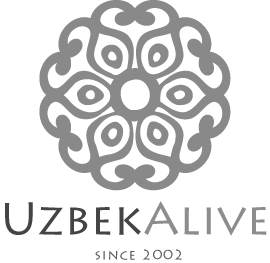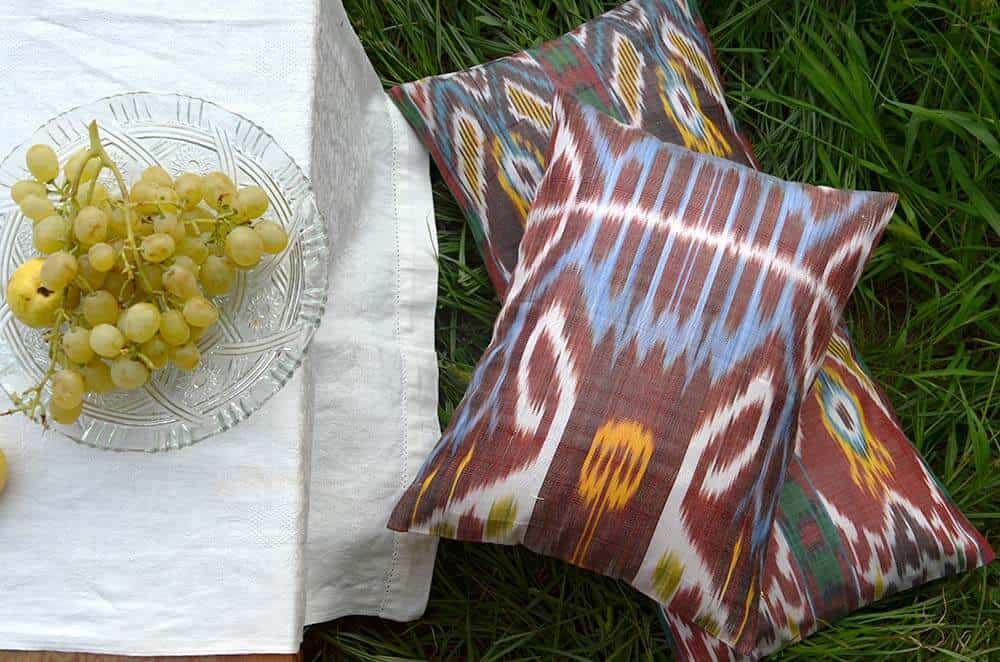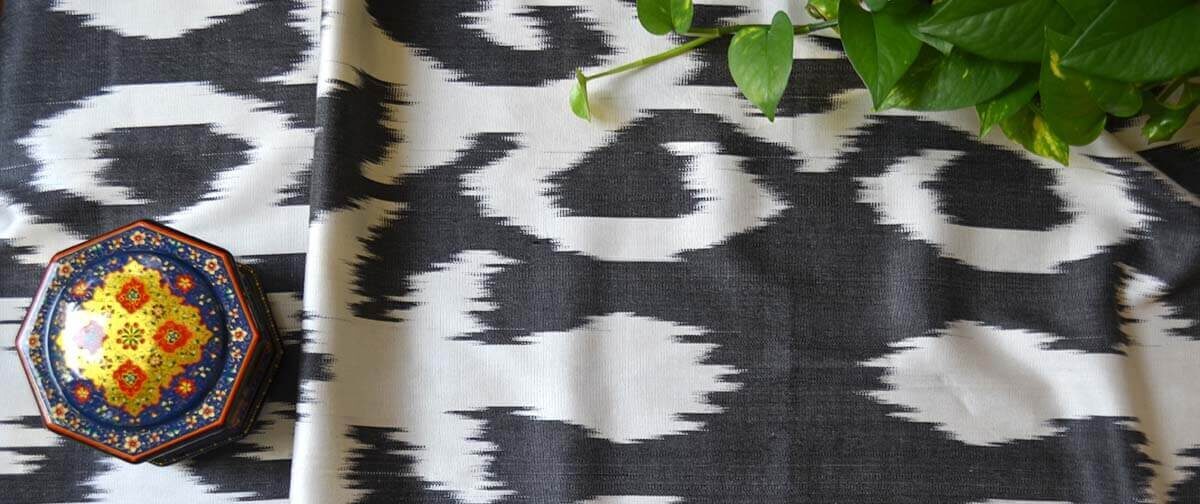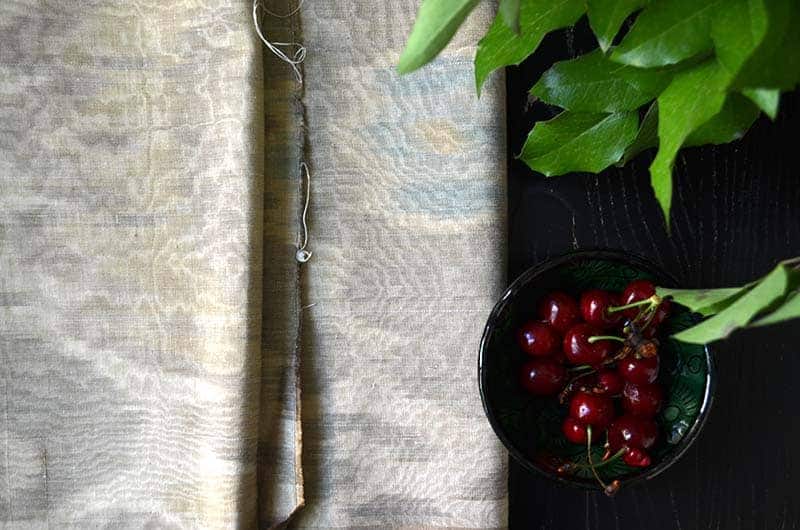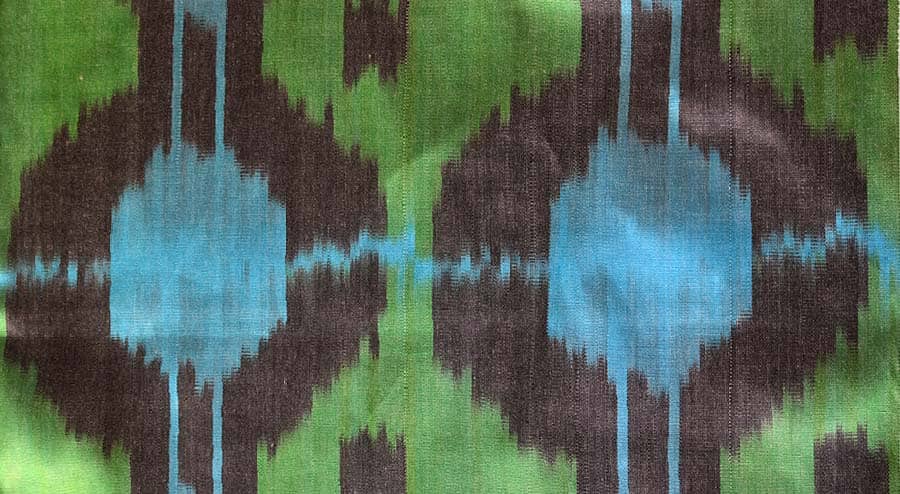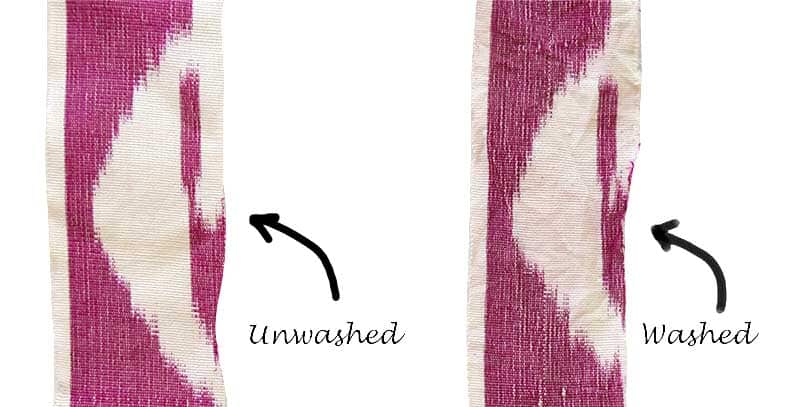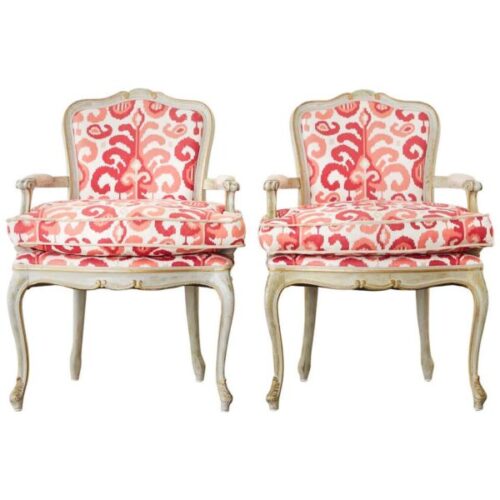5 Things To Consider Before Buying Ikat Fabrics
There is something undeniably attractive about ikat fabrics. They never fail to attract, whether they are displayed in a shop window, worn at an event, or used to make home decor or other items for the house. No matter what item you make from Ikat fabric, it will always look chic.
Ikat fabrics have their own characteristics which may or may not meet your requirements. It isn’t just about picking up a fabric with the the most beautiful ikat pattern and in beautiful colors, but a lot more. There are numerous factors to be taken into account before making that final choice.
Therefore, before directly jumping into buying ikat fabrics, you need to put some thought into how you are going to use the fabric. As in, what width of a fabric you will need, do you need to match ikat pattern and how you will care for the fabric .
7 Most Frequent Ikat Fabric Uses In Interior Design
Ikat fabrics have seen a dramatic rise in popularity in the worlds of both interior design and the fashion industry. The dyeing techniques that are used to create a distinct style of Ikat patterns are still very popular in Uzbekistan. Ikat fabric uses are infinite. Today we are going to tell you some popular ways to use them in decorating the interior of your home.
You can use the ikat fabrics in the process of embellishing the furniture upholstery, bedside headboards, pillow covers, curtains, and bedcovers. Moreover, we will show you how to subtly incorporate our ikat fabrics into your interior design to give it a rich, ethnic feel while still infusing it with a modern, stylish atmosphere.
1. Ikat Pillows
Pillows are an absolute need as a comfort item, whether they are used for decorating a couch or for snuggling on a bed. And what a luxurious way to beautify your couch or bed with ikat pattern pillows!
Uzbek ikat textiles – wash or dry clean?
Properly caring for ikat fabrics is the most important thing you can do to extend life of your textile products. In this post we would like to talk about washing ikat fabrics and in which cases you should consider washing versus dry cleaning. Let us start off with a bit of history.
A bit of history …
In the 19th century, a silk yarn was as expensive as gold, ikat making technique was known to a few and the ikat garments were amazingly pleasant to wear. These were the days when the ikat textiles were only available to the richest and were considered to be a true luxury item.
With time, the ikat makers thought of a way of making ikat textiles more, let’s say, democratic. They started combining luxurious silk yarns with a more affordable cotton fibers and created, so called, “adras” fabric. Adras is a beautiful and rich blend of silk and cotton fibers (usually around 50% silk and 50% cotton but percentages may vary). This brought the cost of the ikat fabrics down but by not that much – ikat fabric making still remained to be a highly manual process.
What is ikat design you see in so many fabrics?
Availability of Ikat fabric online created a lot of interest in these unique and noble textiles. The history of Ikat fabrics covers different countries where artisans independently of each other (or not so independently?) created different patterns and used various symbols. We love good stories, especially when it comes to symbols used in fabrics. This blog post is about ikat design, ikat patterns and influences affecting them.
Ikat design is about abstraction. The ikat binding technique and resist dying soften the edges of the ikat pattern making the transition of one color to the next softer, blurrier or cloudier. Hence, the local name for the technique – abr (cloud). The artisan binding the fabrics is known as “abrband” (weaver of clouds).
Ikat design and abstract art
For a land that was at crossroads of so many cultures and changing religious and political influences it was only natural and safe (!) to stick to something that is abstract. A pattern that vaguely looked like a carpet weaving comb could be seen as a lucky amulet if turned upside down.
How to care for ikat fabrics?
How to care for ikat fabrics? This is what this blog post is about. Let me start off with a bit of a history. Ikat, as you may already know since you are on this website, is an Indonesian term
Ikat fabric for upholstery: 3 examples of pairing antique chairs with ikat fabrics
Ikat fabrics are widely used for upholstery. They are “go to” fabric when it comes to creating Boho Interiors with subtle and not so subtle ethnic touches. Using ikat fabrics also creates amazing results when ikats pair with antique and
